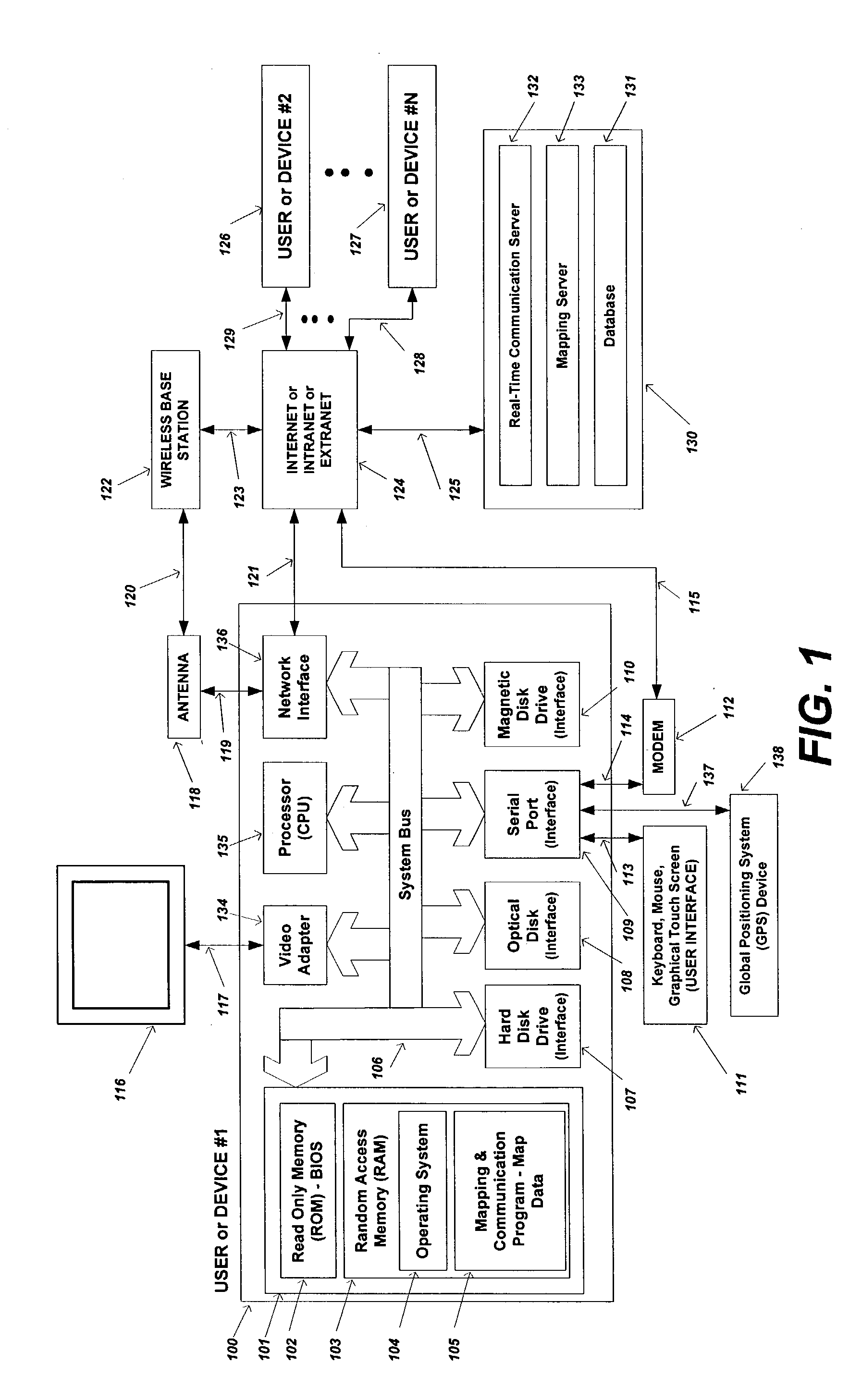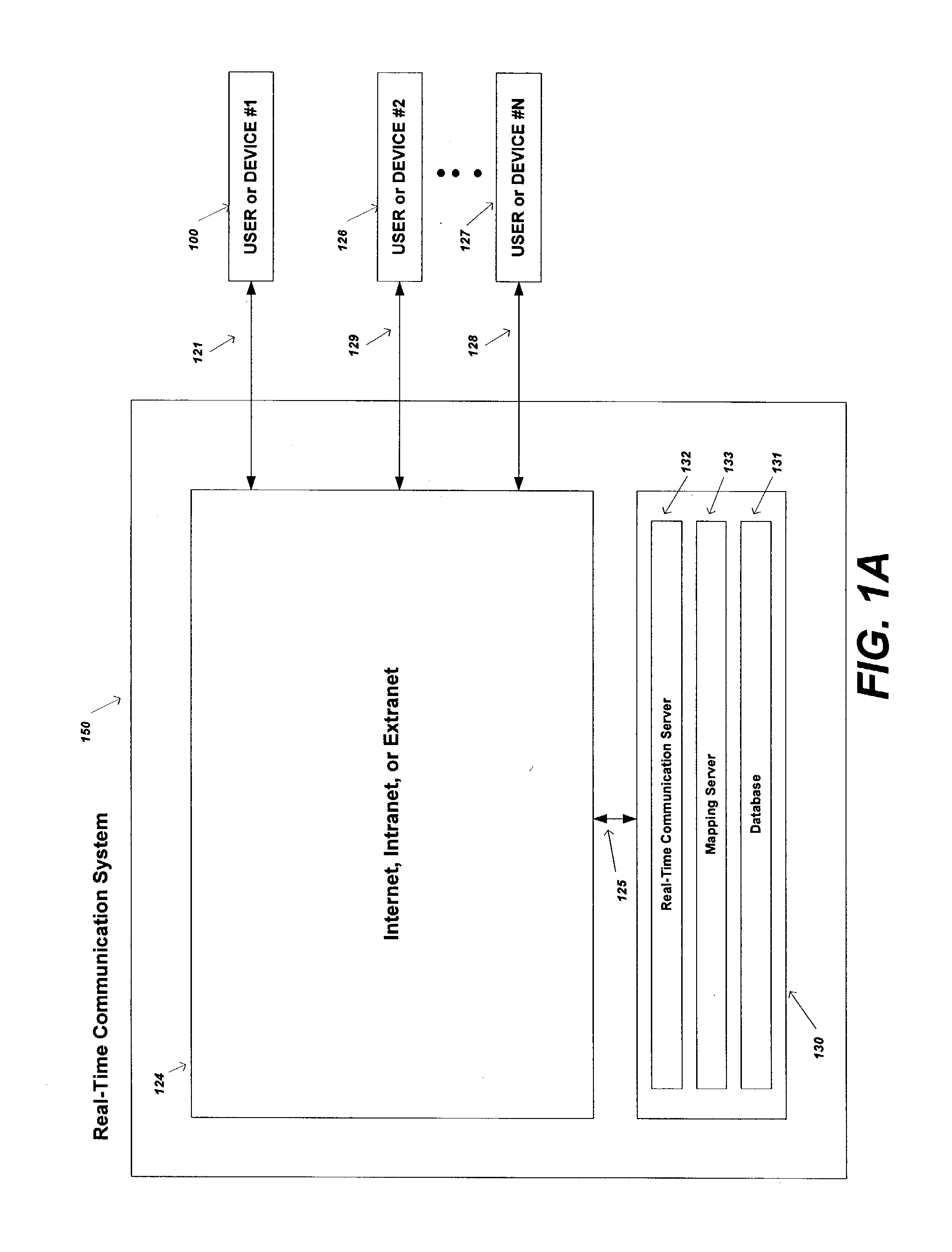Method and apparatus for sending, retrieving and planning location relevant information
a technology of location relevant information and method, applied in the direction of electrical programme control, program control, instruments, etc., can solve the problems of not enabling the transfer of location relevant information to other users in real-time, application does not provide a method for dynamically and graphically transferring location relevant information coupled with a spatial map
- Summary
- Abstract
- Description
- Claims
- Application Information
AI Technical Summary
Benefits of technology
Problems solved by technology
Method used
Image
Examples
Embodiment Construction
[0077] The details of the preferred embodiments of the present invention will now be described with references to FIGS. 1-32.
[0078] The present invention provides a method and system for graphically sending (and sharing), retrieving, and planning location-relevant information with a mapping and real-time communications applications, where both applications can be integrated into one application or each application is separate and capable of communicating with the other. The present invention may be embodied in a mapping and real-time communication application, such as the "Map Messenger" application owned and licensed by the Networks In Motion Corporation of Pasadena, Calif.
[0079] FIG. 1 illustrates a high-level diagram of one environment that is a suitable computing and networking environment in which the invention may be implemented. The invention will be described in the general context of an application that executes on an operating system in conjunction with a personal computer...
PUM
 Login to View More
Login to View More Abstract
Description
Claims
Application Information
 Login to View More
Login to View More - R&D
- Intellectual Property
- Life Sciences
- Materials
- Tech Scout
- Unparalleled Data Quality
- Higher Quality Content
- 60% Fewer Hallucinations
Browse by: Latest US Patents, China's latest patents, Technical Efficacy Thesaurus, Application Domain, Technology Topic, Popular Technical Reports.
© 2025 PatSnap. All rights reserved.Legal|Privacy policy|Modern Slavery Act Transparency Statement|Sitemap|About US| Contact US: help@patsnap.com



